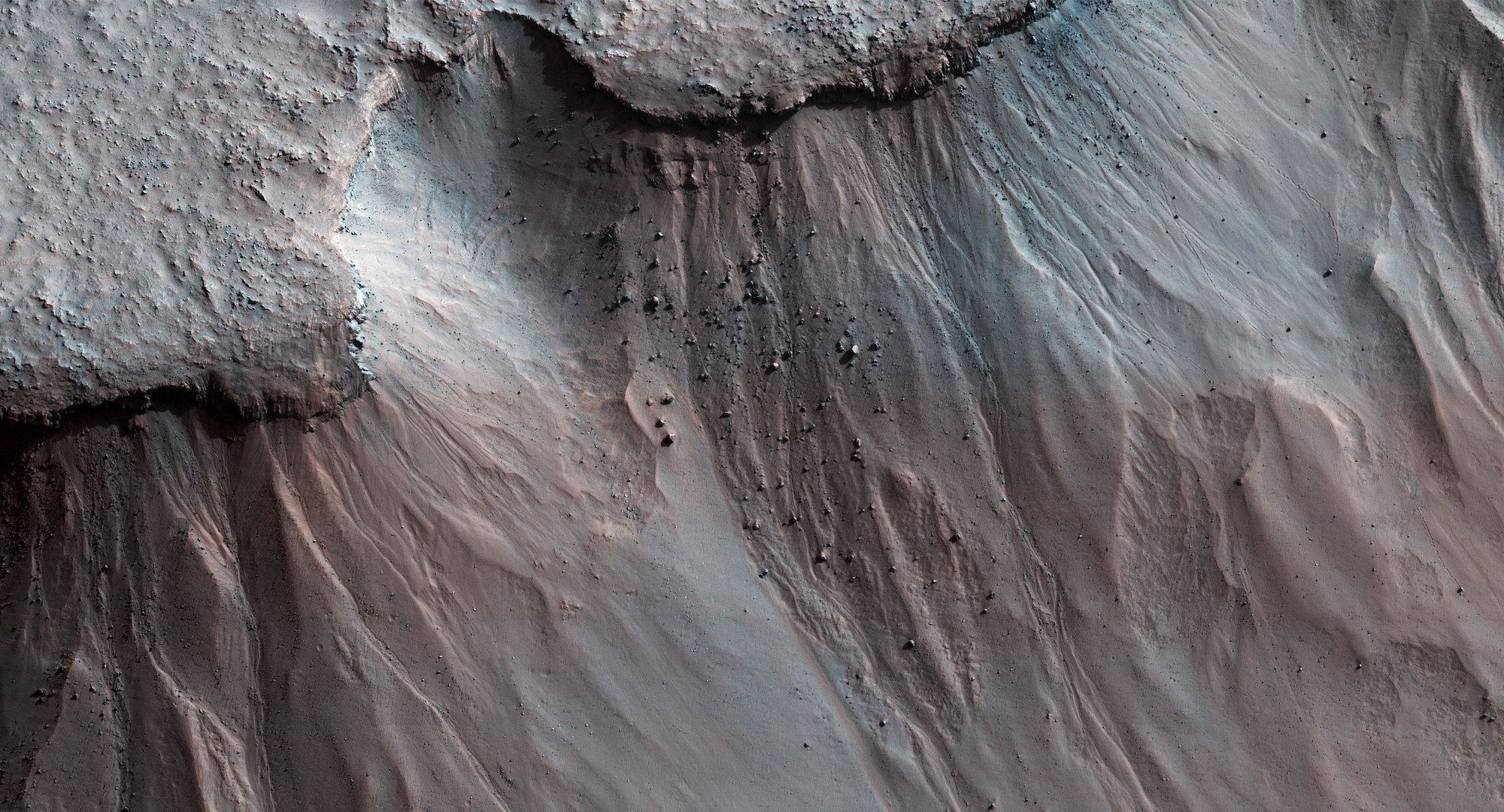Some landslides, both here on Earth and on Mars, behave in a puzzling way: They flow a lot further than friction should allow them too.
They can also be massive, including a well-preserved one in Valles Marineris that is the same size as the state of Rhode Island. Scientists have speculated that it might be so large because a layer of ice that existed in the past provided lubrication. But a new study suggests that no ice is needed to explain it.
The new study is published in Nature Communications and is titled “Longitudinal ridges imparted by high-speed granular flow mechanisms in martian landslides.” It’s lead authors are Giulia Magnarini and Tom Mitchell, both of University College of London.
The type of landslide in question is called a “long run-out landslide,” or sturzstrom, and they seem to defy the laws of physics. Their length of flow along the ground greatly exceeds their fall height, but according to physics, friction should prevent that. Though made of rock, they flow more like glaciers, mud, or lava, and their mobility increases with volume. When they flow, they can reach speeds up to 360 km/h (224 mp/h) and travel for tens of kilometers.

Scientists have tried to understand how they do this, and have come up with a number of possible explanations:
- The landslide debris glides over a layer of trapped air, reducing friction.
- A layer of water could lubricate the path that the slide follows.
- Heat from the friction melts underwater ice, or rock, providing the required lubrication.
The scientists behind the new study focused their efforts on Mars, where landslides are preserved much longer than they are here on Earth. On Earth, landslides are erased rather quickly by erosion, plant growth and geological activity. To study Martian landslides, the team used Digital Elevation Models (DEMs) based on data from the Mars Reconnaissance Orbiter’s HiRise and CTX cameras. They examined Coprates Chasma, one of the numerous sub-canyons that make up Valles Marineris.
Coprates Chasma has one of the most well-preserved landslides on Mars. The landslide has ridges that extend in the direction of the landslide flow along almost the entire length. In the past, scientists thought these ridges formed because of the presence of underlying ice. The fact that these ridges have been spotted on landslides near glaciers here on Earth lent credence to that idea.

These ridges occur both on landslides on glaciers here on Earth, and in preserved landslides on Mars. That led to the hypothesis that Mars was once covered in ice. But Valles Marineris and Coprates Chasma are right on the Martian equator. There’s a lot of debate on whether or not there were glaciers on the Martian equator at the time of the landslide. One 2019 study dismissed the idea completely.
By constructing DEMs of the Martian landslide, the researchers were able to determine key facts about the landslide, including its thickness. They also measured the ridges: their height, their length, and their wavelength, or how close together they are from ridge-crest to ridge-crest.
A key part of the their work is the wavelength. They found that the wavelength of the ridges is consistently two to three times the thickness of the landslide itself. This relationship has only ever been seen in lab work before, in experiments that don’t involve ice. These DEMs of Martian landslides are the first time this relationship has been found in the field.

So, it looks like ice is not a prerequisite for these types of ridges and landslides.
Instead, the researchers had another explanation, which they outlined in this article at theconversation.com. They say that an underlying layer of lighter, unstable rocks could explain the landslide and the ridges. That layer would form from the action of the landslide itself, as larger rocks were pulverized. In turn, that would have created a convection process, where the lighter rocks would rise due to their heat, and heavier, cooler rocks would fall to the bottom of the landslide.
“Once we had accounted for this mechanical instability – and coupled it with the movement at phenomenal high speed of the slide – we could show that vortices extending in the direction of the landslide’s movement were generated, giving rise to the long ridges that we observe on the surface of the landslide,” Mitchell and Magnarini said in their article.

These types of landslides still happen on Earth. But evidence of them is obliterated fairly quickly, while on Mars the evidence sticks around for a very long time. By studying the Martian long run-out landslides, they may have answered a question that’s important here on Earth.
As the pair of authors say in their article, “The findings are important. On Earth, the incomplete record of such catastrophic events can lead to misinterpretations and overlooking of the hazard of these landslides. But, as they happened in the past, they will happen in the future, posing great risk to infrastructures and people lives.”
More:
- Article: Mars: we may have solved the mystery of how its landslides form
- Research Paper: Longitudinal ridges imparted by high-speed granular flow mechanisms in martian landslides
- Universe Today: More Recent Landslides Spotted on Mars

